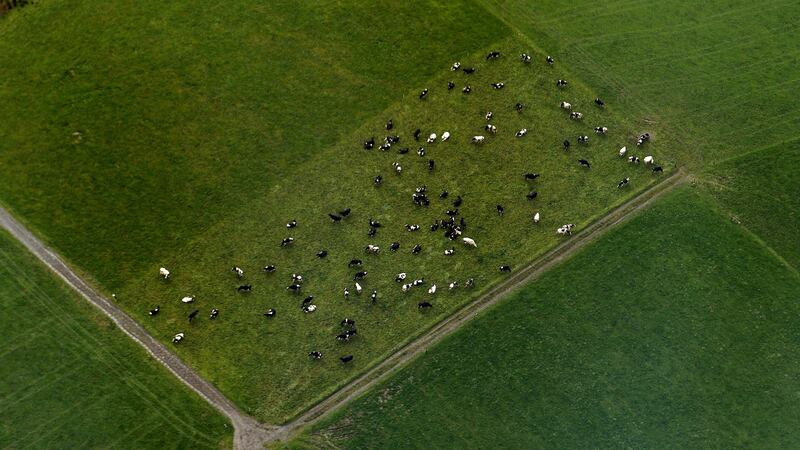Ireland has long prided itself on its credentials as a producer of natural, wholesome food. Kerrygold’s international success was underpinned by images of cattle grazing in open fields, and no opportunity is lost to promote Ireland as the green island for food production.
However there was more to this than a clever marketing strategy. While it’s certainly better from an animal-welfare perspective, there has always been a belief that grass-fed animals produce meat and milk which not only tastes better, but is actually better for you from a health and nutrition point of view.
There hasn't been an awful lot of scientific evidence to support this belief, though. Up until now that is. A Department of Agriculture and the Marine research project carried out by Teagasc and Uniersity College Dublin has found that grass-fed beef is indeed nutritionally superior to beef from cattle fed on concentrates; not dramatically so, but detectable nevertheless.
"You've always got to be careful in relation to what you say about these things," says Teagasc research officer Prof Aidan Moloney who led the project. "But the variables are pointing in the right direction."

In particular, the research found higher concentrations of important minerals such as iron, zinc, and selenium in grass-fed beef. It also found higher levels of vitamin E. Very importantly, considering the current focus on obesity and cardiovascular disease, it also found higher levels of beneficial Omega 3 polyunsaturated fatty acids and lower levels of the problematic Omega 6.
The research project, entitled Nutritional Composition, Human Health Implications and Marketing Opportunities for Beef from a Grass-Based Production System, looked at beef produced by two sets of animals. One set was reared in conformity to what was the US definition of grass-fed beef at the time. The other set was reared on a high-energy diet of cereals and other feedstuffs similar to practices in Europe and North America.
These were deliberately chosen as extremes of beef-production systems, according to Moloney. Having animals which only ever ate grass or grass derivatives would be unusual, as would animals who never did. However, this allowed for a comparison of grass-fed and non-grass-fed animals without risk of confounding factors.
The beef from the animals was subject to chemical analysis which produced the results in relation to minerals, vitamins and fatty acids. Encouraging as they are, these results have to be treated with caution.
“While there were increased levels of these things, they were not sufficiently high for us to be able to claim grass-fed beef to be a source for them under EU food-safety and other regulations,” says Moloney.
He is more encouraged by the findings of another aspect of the study, however. The UCD team led by Dr Breige McNulty and Prof Helen Roche looked at the National Adult Nutrition Survey to assess the potential impact which grass-fed beef could have on people's health.
“They were able to look at different classes of consumer and their dietary intake and see what the effect of substituting grass-fed beef for other beef in their diet would have,” says Moloney. “What they found is the consumption of grass-fed beef has the potential to change the composition of dietary fatty acids and to improve population adherence to dietary recommendations.”
The overall finding of this element of the study was that this “suggests that habitual consumption of grass-fed beef is a potential public health strategy to improve dietary fat quality”. Good news for the Irish beef sector.
Moloney explains the practical implications for consumers: “The recommendation is that we get no more than 30 per cent of our daily energy intake from fat. That is easier to achieve with grass-fed beef.”
As the UCD team found, “grass-fed beef consumption has the potential to improve dietary fat intakes without affecting habitual dietary intakes”. That will be welcome news for beef-loving consumers but there is a caveat, with the team adding that “further research is required, using randomised controlled trials to determine the impact of habitual grass-fed beef consumption on metabolic health”.
The difference may be slight, but the result is important nonetheless – Irish grass-fed beef is better for you than the alternative. It’s just a question of how much.















